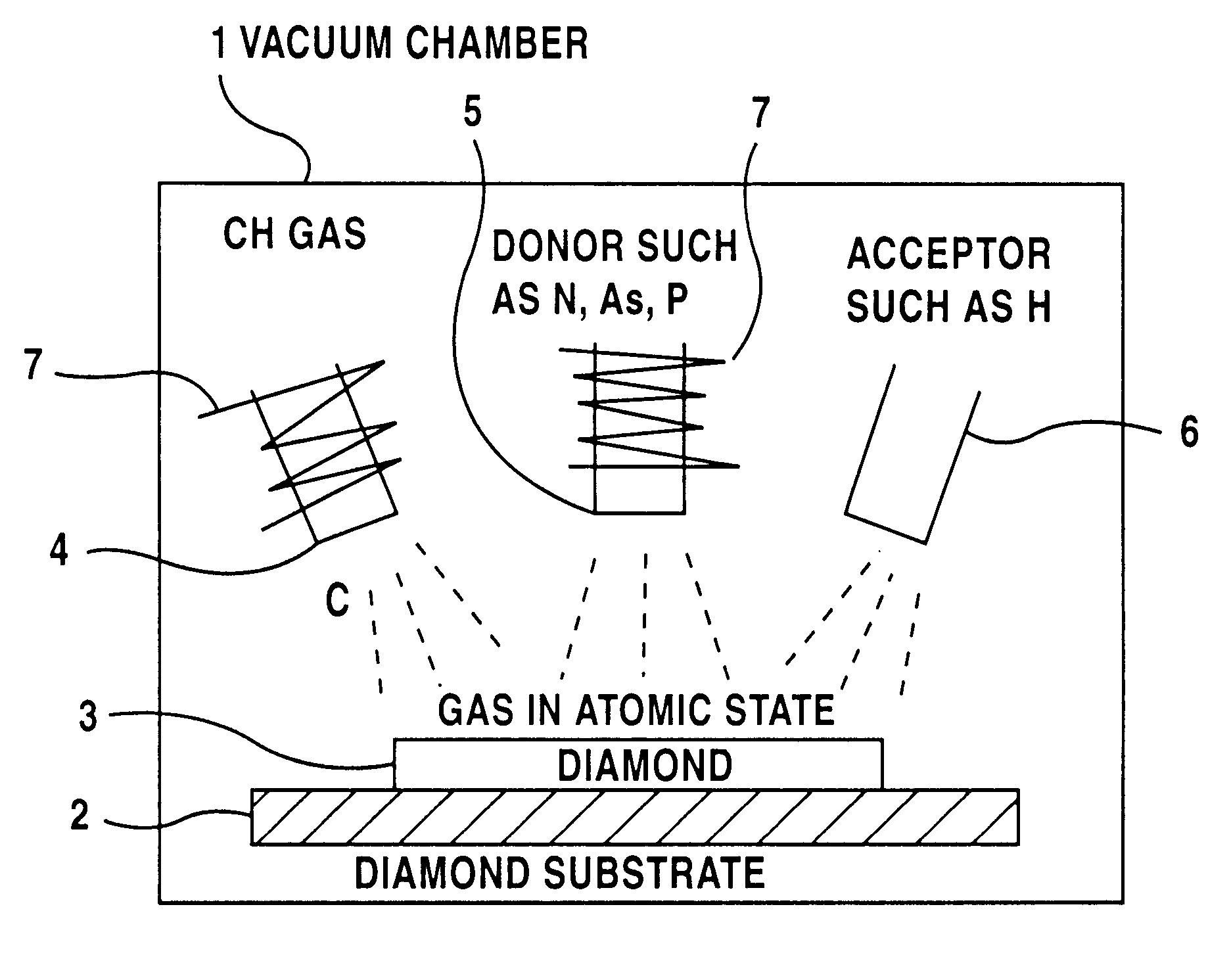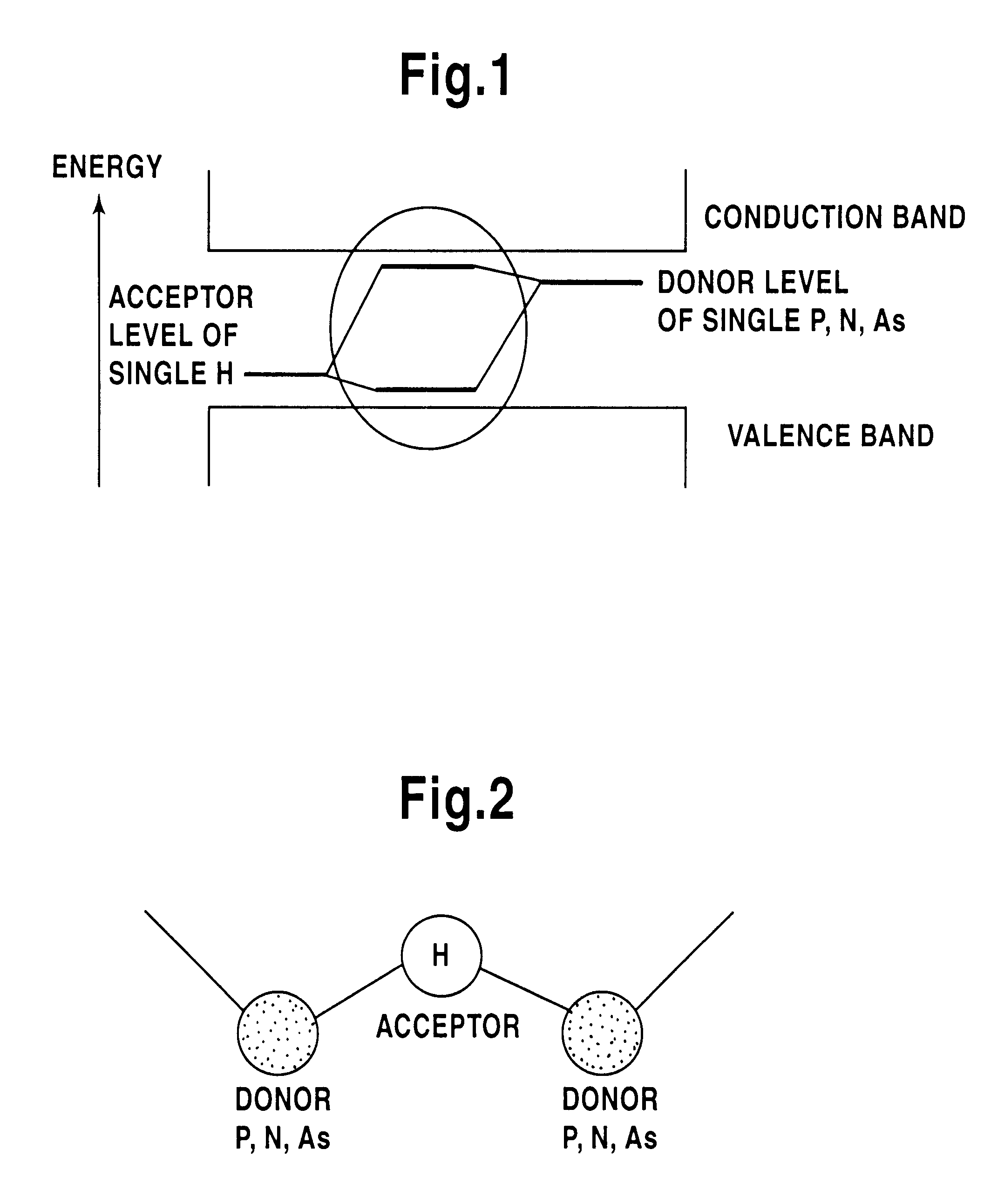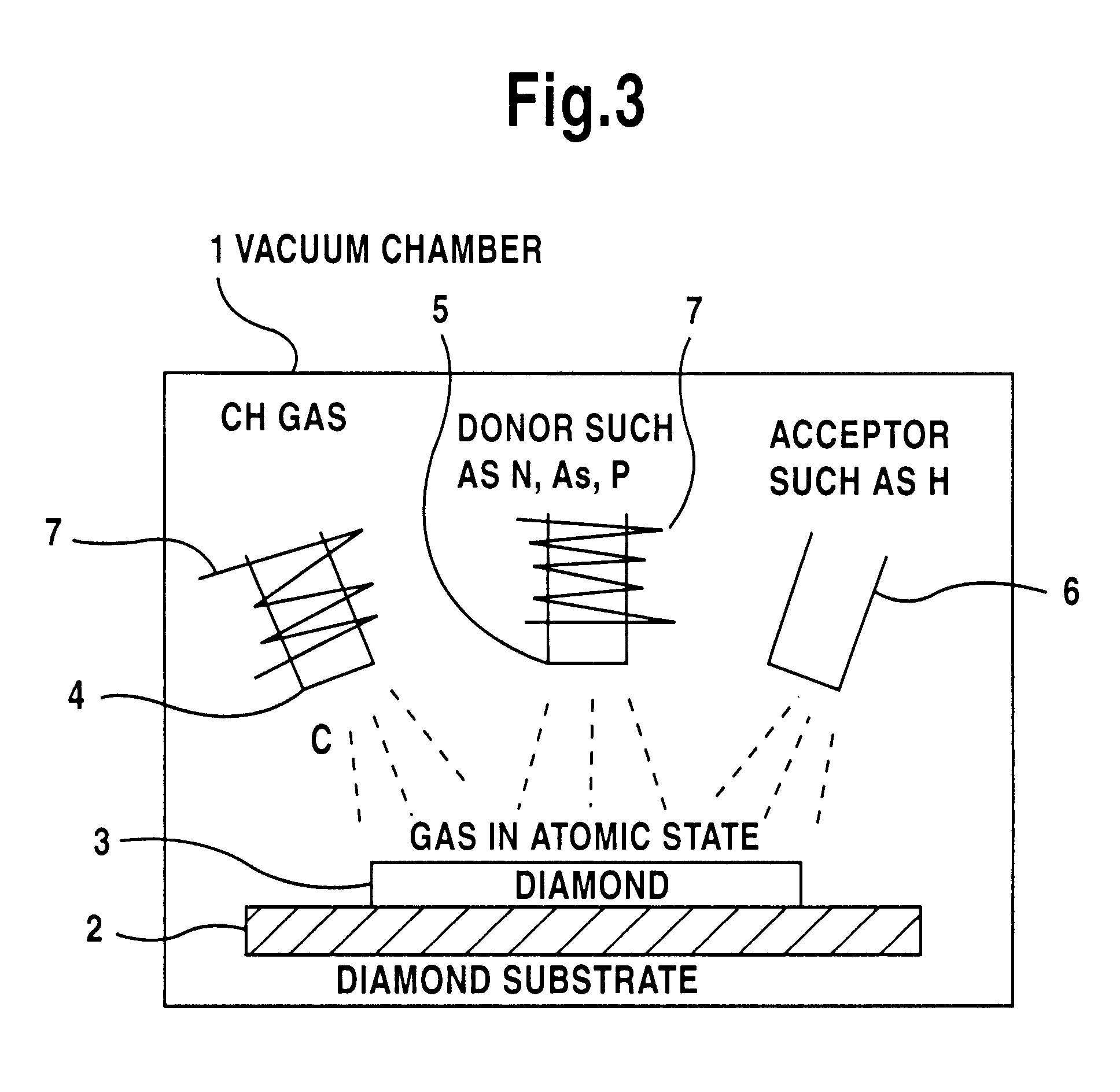Method for synthesizing n-type diamond having low resistance
- Summary
- Abstract
- Description
- Claims
- Application Information
AI Technical Summary
Benefits of technology
Problems solved by technology
Method used
Image
Examples
examples
As shown in FIG. 3, the vacuum chamber 1 was maintained to be vacuum degree of 10.sup.-10 torr, and the substrate 2 was heated by the electrical heater. CH gas (hydrocarbon, methane, ethane, propane) was introduced through the gas introducing pipe 4, and was thermally decomposed by the RF coil 7 to supply the molecular flow toward the substrate 2 so as to be adsorbed on the substrate 2. P as a donor was emitted toward the substrate 2 through the introducing pipe 5 at the flow rate of 5.times.10.sup.-9 torr, and H as an acceptor was emitted toward the substrate 2 from the introducing pipe 6 at the flow rate of 10.sup.-9 torr so as to simultaneously dope them, to thereby form a diamond 3 at the substrate temperature of 400.degree. C., 450.degree. C., 600.degree. C., 800.degree. C. and 900.degree. C. P as a donor and H as an acceptor were electrically excited by the RF coil 7 so as to become an atomic gaseous state. After 90 minutes had passed, the crystal growth was interrupted.
The ob...
PUM
| Property | Measurement | Unit |
|---|---|---|
| Angle | aaaaa | aaaaa |
| Temperature | aaaaa | aaaaa |
| Electrical resistance | aaaaa | aaaaa |
Abstract
Description
Claims
Application Information
 Login to View More
Login to View More - R&D
- Intellectual Property
- Life Sciences
- Materials
- Tech Scout
- Unparalleled Data Quality
- Higher Quality Content
- 60% Fewer Hallucinations
Browse by: Latest US Patents, China's latest patents, Technical Efficacy Thesaurus, Application Domain, Technology Topic, Popular Technical Reports.
© 2025 PatSnap. All rights reserved.Legal|Privacy policy|Modern Slavery Act Transparency Statement|Sitemap|About US| Contact US: help@patsnap.com



